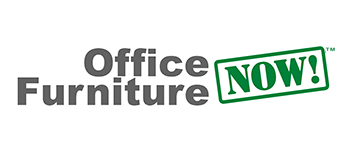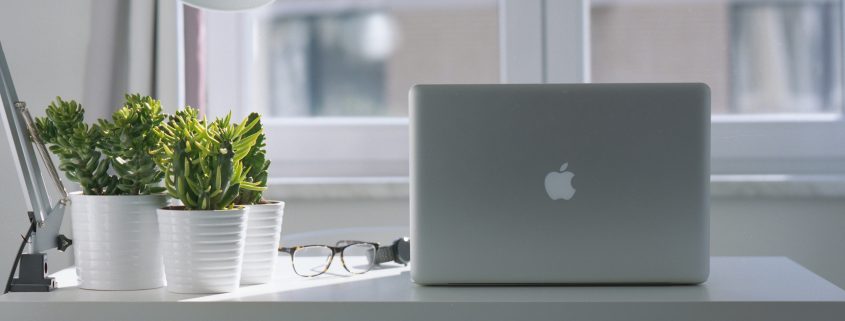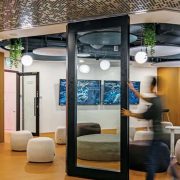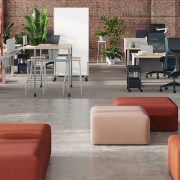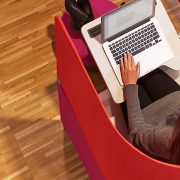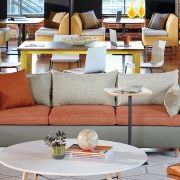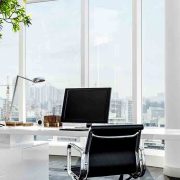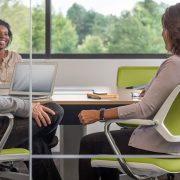Managing Workplace Disruption
Managing workplace disruption has become an overnight priority as COVID-19 pandemic protocols have become the new normal. The boundaries of how far organizations thought wellbeing and flexible workplace policies could stretch have been extended beyond what was ever thought possible. Even organizations like universities and utilities, with more traditional workplace cultures, are directing staff to work remotely in an effort to keep employees safe and slow the spread of the virus. Organizations that already had a substantial work-from-home population are also finding the need to quickly and unexpectedly expand their remote work programs to keep their teams collaborative for an undetermined amount of time.
Businesses across all geographies and industries are coping with workplace and supply chain disruption. Companies who effectively manage that disruption will be well-positioned to maintain business operations throughout any future disruption and they will be well prepared for flexible work in the future.
As employees pack up their laptops to work from remote locations, workplace strategists and corporate real estate leaders must reinvent their role in reshaping productive, engaging workplace culture and behaviors through telecommunications and online communities. Ensuring employees have the tools and support they need to be productive, effective and connected while working remotely can benefit every level of staff. Putting these strategies in place on a daily basis can keep you poised for any future emergency.
Prioritize Health & Wellness
As COVID-19 expands across the global population, the top priority of every organization should be protecting the health of its talent, customers, vendors, and other stakeholders. Countless organizations are demonstrating their commitment to slowing the spread of the virus by closing facilities, scaling back and deploying remote work strategies.
Allowing employees to self-quarantine at home keeps a large segment of workers safe, but what about employees who cannot do their jobs remotely? Some organizations are quarantining mission-critical functional areas needed to remain operational, by cordoning off physical spaces for employees can do their jobs without coming into contact with other people. To keep the power grid up and running some energy companies are even exploring the idea of having power plant operators sleep in the plant to minimize exposure.
Such measures may seem extreme and will surely be disbanded when social distancing is no longer required, but one thing the pandemic has made clear is just how important it is to pay attention to healthy workspace practices. Healthy buildings sustain employees every day. At the end of this pandemic, we will see a transition to a sharper focus on things such as LEED certifications, ventilation, air filtration, cleaning, and facilities management preparedness that will provide more long term peace of mind.
Build A Sustainable Infrastructure For Virtual Work
A virtual workplace includes many of the same elements as a physical workspace: places to collaborate, opportunities to share ideas and productive elements to get work done efficiently. But if you have no infrastructure in place, it can take a seemingly Herculean effort to ensure that each employee has the basic technology to be effective in that virtual environment:
- Laptops
- VPN
- File-sharing systems
- Access to essential software
- A mobile phone
- High-speed WiFi at home
In addition to basic infrastructure, organizations will need to provide access to the right collaboration and communication tools to work together virtually. Even in the collaborative open plan workplace, by design, we create neighborhoods so people who must collaborate sit in close proximity to each other. There are still those departments that work in silos within those neighborhoods. Figuring out how to recreate the neighborhood concept online is the virtual workplace challenge. From internal chat and messenger apps to videoconferencing solutions like Zoom meetings, we must build in the tools to equip employees to communicate anywhere, anytime…and provide the training to use these tools. This can make a huge difference between a connected organization and a collection of people who have suddenly begun working in silos.
We do not need a pandemic to modernize and restructure meeting styles to incorporate these things weekly into your workplace culture. We need a strategy. A digital workplace manager or team to support IT as they get set up for remote work will keep things running more smoothly. This support team should also include a workplace designer who provides the advice and tools needed to set up an ergonomic workstation at home, as well as a virtual help desk to help employees navigate the complexities of setting up their home systems.
Combat Productivity/Engagement Fatigue
In normal times, many employees report being more productive when working from home. A 2019 survey by Zapier found 42 percent of employees believe they are most productive working from home, compared to 32 percent who feel they get more done in an office. But we are not living in normal times. In this new reality, when even coffee shops and bars are closed down in many cities, working from home with scant in-person interaction for even a few days can feel isolating, which can diminish both productivity and team engagement.
Organizations must make a proactive effort to combat these impacts, taking steps to ensure employees still feel connected even if they aren’t in close proximity. And it should not be all about work. Virtual coffee chats, happy hours or book clubs, along with gaming and avatar-based socialization can go a long way toward achieving this goal. Group training sessions to learn new ways of working are also helpful to break up the day. They may not be a perfect substitute for the carefully curated lounges, coffee bars and community events that a well-designed office experience provides, but they can help maintain a sense of community until life returns to normal.
As you think about how to reinforce organizational culture, it is important to acknowledge the variety of challenges employees will face during COVID-19 social distancing. A single, extroverted employee working alone from a small apartment may be feeling deep loneliness. A working parent may be under intense pressure to juggle the care of small children or manage homeschooling in the midst of their workday. Their desire/ability to participate in virtual cultural events may differ widely, but all employees can benefit from regular phone or video calls with their direct teams about work-related matters and digital collaboration tools that make it easier to collaborate.
Explore Alternative Work Sites
In some instances, employees will be unable to go into the corporate office as usual, but working from home isn’t an option. This could be due to the nature of an individual’s role being too sensitive to be carried out in an unsecured location, they need access to equipment or programs that are inaccessible for remote work, or because the home environment is not conducive to work.
For this reason, some organizations are assessing alternative work sites, such as sterilized coworking centers. If you are considering such an option, it’s important to have a clear understanding of their sanitation processes and schedule, and who has access to the facility. Longer-term, more organizations may see the value in identifying a network of alternative worksites where employees can be productive during the normal workday. Planning ahead with flexible work programs like this can lessen the impact of emergency situations on workflow and productivity.
Improve The Lines Of Communication
Clear communication is essential to provide transparency during periods of growth and change of any kind. Establish protocols and guidelines to communicate information to employees and business partners on your infectious disease outbreak/emergency response. An intranet site can serve as a one-stop-shop for employees to access any information they are seeking about COVID-19 workplace policies and updates.
Just as important, avoid miscommunication by ensuring the appropriate dissemination of information and avoiding “fake news” or “infodemics.” (An “infodemic” is an overabundance of information—some accurate and some not—that makes it hard for people to find trustworthy sources and reliable guidance when they need it.) Keep it simple, direct to the point and proactive.
Recognize that employees will have many concerns about the impact not only to their workday but also about the longer-term implications for the economy and their job. Communicate early and often about the impacts of the pandemic to your business and the expectations for employees during this period, and set up feedback channels for employees who have concerns and questions.
How Will COVID-19 Change The Future Of Work?
It’s impossible to predict the long-term implications of today’s sudden, massive shift to remote work, but a few outcomes are possible. One is that employees and business leaders alike will open their eyes to the value that can be unlocked when each individual has the freedom to work where and when it makes most sense—which may be from home at least part of the time. But it’s just as likely that we will emerge from this period craving more of the face-to-face interaction that has been sorely missed. This will impact a greater understanding of how physical space influences the way we all feel and work each day.
Workplace strategists and designers will be tasked with an even more important role to play in shaping the future of work and spaces where we can come together to connect, work productively and be inspired. Assisting your team with the resources to create a productive home office environment would also create a more seamless shift to remote work in a sudden unexpected instance like COVID-19.
OUR SHOWROOM IS OPEN with ergonomic home office solutions including seating, desks, and worktables.
Original content by Bernice Boucher. Photo by Daan Stevens on Unsplash
 MEET JULIE SHEAFFER: She can help you explore wellbeing office design trends and keep your workplace connected. If you are ready for a change, contact Julie at 888-910-3769 x 129 or julie@officefurniturenow.com. For more inspiration visit us on Facebook, Pinterest, and Twitter!
MEET JULIE SHEAFFER: She can help you explore wellbeing office design trends and keep your workplace connected. If you are ready for a change, contact Julie at 888-910-3769 x 129 or julie@officefurniturenow.com. For more inspiration visit us on Facebook, Pinterest, and Twitter!
